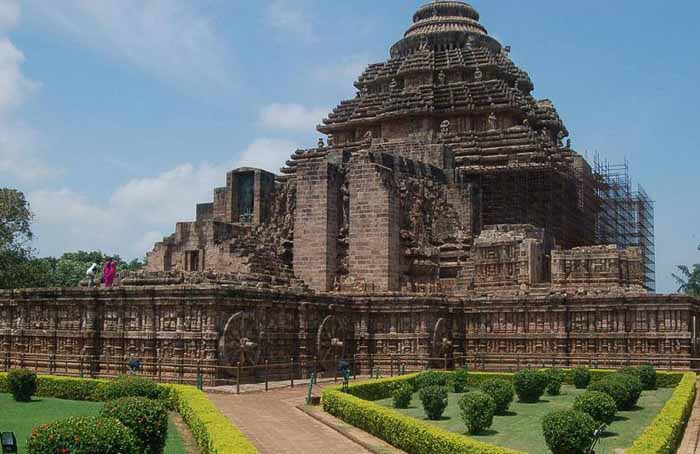Konark Sun Temple

Information of Konark Sun Temple, Puri, Odisha
This Particular Sun Temple is situated in front of the River Chandrabhaga in Konark in the Indian State of Orissa. It is basically a Hindu Temple dedicated to the Sun God also known as Surya Deva in Sanskrit. The Konark Sun Temple stands majestically with its beauty and architecture since the 13th century. It is also known as the black Pagoda of Orissa. The word Konark is derived from Sanskrit language Kona meaning corner and Arka meaning sun. The temple is listed under the UNESCO world Heritage Site because of its unique built.
Konark Sun Temple Religious Significance
The Kornark Sun temple is an important pilgrimage centre for people who deeply worship the Sun. It is also visited by Hindus from all over India. The Sun is the Supreme power house of all energy and anyone who worships Sun with deep faith will be blessing with good health and prosperity. The Sun is so powerful that it can radiate warmth out of love and at the same time burn out of rage. It is an important aspect in the Hindu Mythology and people worship sun with utter faith and belief.
Konark Sun Temple Mythology & History
Like most historical monument the Konark Sun Temple was built on the ruins of its original temple said to have built in the 9th century. In the 12th century the present Sun temple was built by King Narasimhadeva I of the Easter Ganga Dynasty. The temple was constructed as a sign of his victory after defeating Tughral Tughan Khan. The king ordered for a Sun temple to be built and it took a span of 12 years to complete the temple with the help of twelve thousand workers and artisans. It is said that the artisan failed to install the crown stone. The furious King ordered them to finish the temple in three days anyhow. At this point a solution was proposed by Bisu Maharana's son but the artisans feared that the King will be angry with them when he found out a little boy had a solution while great artisans failed.
The temple served as a landmark for the sailors. Later due to various invasions the temple was ruined. It is also mentioned by James Fergusson that the structure crumpled due to weak foundation. Another reason for the collapse of the temple may be due to negligence because the Puri Jagannath temple was considered the greatest temple in Orissa. The main sanctuary collapsed in 1837.
The main myth present for the construction of the Sun temple is written in the Purana. Lord Krishna's son Samba was cursed with leprosy. A sage known as Kataka instructed him to worship the Sun God. Following his orders for twelve years Samba went through penance and hardship in Mitravana close to the shoes of Chandrabhaga. Hence the Sun temples are built to reflect the life of Samba. The sun God is said to appear on a magnificent chariot driven by seven horsed and the charioteer as Arjuna. The seven horses represent the seven colours of a rainbow.
Konark Sun Temple Architectural Significance
The Konark Sun Temple also known as the black pagoda is built in a unique style dominated with Kalinga Architecture. A pagoda consists of a tower with layers of a typical feature of the South Asian architectural style. The temple faces toward the east so that the first rays of sunlight can fall on the temple. The temple is made up of Khondalite Rocks. The temple was originally built in the shape of the chariot of the Sun God consisting of wheel measuring about 3 feet and also seven horses. The original shrine containing the primary deity was 70 metres high. There is a hall which measures about 30 meters high and is present even today. There is a dining hall and dance hall as well. The walls of the temples consists of stones structures known as the Maithuna a unique feature of the Konark Sun temple. Maithuna is a Sanskrit term which means Sexual Union. The figures are rock cut images. Today only a part of the whole temple exists, still leaving people wondering for its beautiful architecture from the time where every task had to be done manually. There are a number of other temples surrounding the Konark Sun Temple which was discovered much later.
- Andhra Pradesh Temples
- Assam Temples
- Bihar Temples
- New Delhi Temples
- Goa Temples
- Gujarat Temples
- Jammu and Kashmir Temples
- Karnataka Temples
- Kerala Temples
- Madhya Pradesh Temples
- Maharashtra Temples
- Odisha Temples
- Punjab Temples
- Rajasthan Temples
- Sikkim Temples
- Tamil Nadu Temples
- Telangana Temples
- Uttar Pradesh Temples
- Uttarakhand Temples
- West Bengal Temples